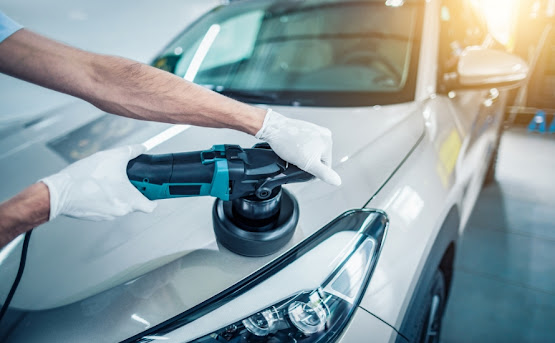How to Wash & Wax Your Car Like Professionals:
Despite the frequent wiping and rubbing it requires, it may seem contradictory, but often washing and waxing your car is the best way to keep the outside paint finish for years to come. However, this is only true if you use the proper products in the right order. Best car detailing Winnipeg services use high quality washing and waxing products specially engineered to work softly on the clear-coat paint finishes. They are great for getting rid of dirt on top of and below the surface, eliminating swirls and other flaws, and leaving a high-gloss shine.
However, this type of obsessive-compulsive work needs proper guidance. Here are a few techniques involved in professionally washing and waxing a car.
Washing:
The most crucial stage for exterior car detailing is washing, which removes the loose particles that gradually build up at the finish's surface, creating a gritty residue that, if not properly removed in the first place, could lead to scratches in subsequent processes. This calls for genuine car wash supplies. These products have a pH balance and are designed to lift and loosen impurities from floors without removing wax. Regular dish soap, laundry soap, and household cleansers must be avoided. Using a microfiber washing mitt, thoroughly wash the car from top to bottom. These are the ones that experts for car detailing use because microfiber lifts the dirt particles off the paint. Use a soft, absorbent waffle-weave microfiber drying towel to completely dry the car.
Cleaning the Gunk:
Next, examine the paint, looking for below-the-floor flaws like swirls, oxidation from the sun's UV radiation, or etching from acid rain. Above-the-surface bonded contaminants include a thin film of tree sap, hen droppings, or pollen. The mild abrasiveness of a clay bar made specifically for car cleaning will shear off and eliminate those impurities. Apply it with small, circular, overlapping strokes using a foam applicator pad that has been microfiber protected. Never apply harsh pressure.
Polishing:
Because clear-coat finishes are so highly resistant to oxidation, polishes and glazes provide shine but do not protect the finish, making their use fully optional. It may be beneficial to use a polish or glaze. Apply the polish or glaze by hand, using small, circular, overlapping strokes with a microfiber-blanketed or foam applicator pad on one region of the car at a time. Once the product becomes cloudy, remove it with a microfiber towel. This is similar to how you did it earlier in the cleaning process. Never let the polish completely dry. Dry polish can be removed but doing so will almost certainly leave scratches in the end.
Waxing:
You should wax your car for safety reasons, and expert of exterior car detailing Winnipeg advise doing it at least once every three months. In comparison to older-style carnauba-based fully waxes, modern synthetic polymer-based waxes typically provide longer-lasting protection and are simpler to apply in the sun. The most recent liquid or paste waxes often provide the longest-lasting protection, lasting three to four months if the car is stored away from severe environments.
Use the same approach whether you're applying a liquid or paste wax: tiny, round, overlapping strokes, using a microfiber-blanketed or foam applicator pad, and working one section of the car at a time.




Comments
Post a Comment